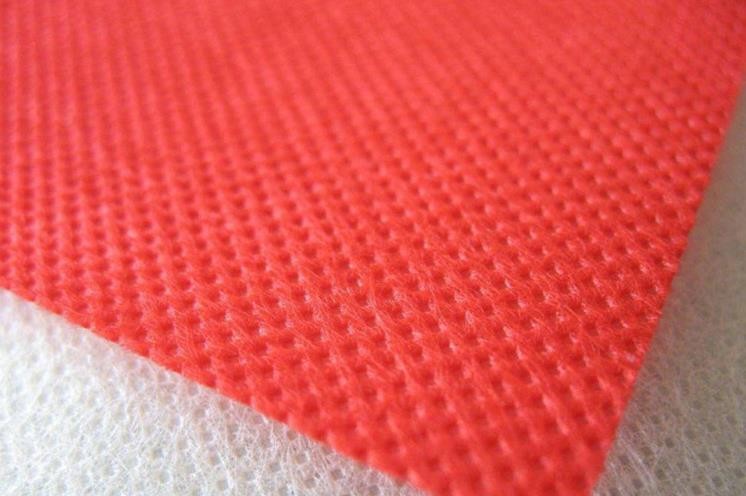Non woven is widely used because of its fast fabric forming, less equipment application, energy saving and high profit. Fiber netting and fiber consolidation are important processes in the production of non woven fabric. This paper briefly introduces several common mechanical consolidation processes of fiber mesh.
Acupuncture is the oldest method in non woven production. Through the puncture effect of acupuncture, the fibers are intertwined and reinforced into cloth. The expanded unconsolidated fiber mesh enters the acupuncture machine through a pair of feeding radiation, and the fiber mesh enters the working area of the acupuncture machine and passes through a pair of needle plates. The needles are arranged along the width direction of the needle plate, which is installed on the needle beam that reciprocates up and down through the eccentric crank mechanism. In the process of descending, the needle drops, successively passing through the mesh plate eyelet, the fiber mesh and the mesh plate eyelet. In the process of ascending, the barbed needle with barbed hook retracts upward, and the fiber net is separated from the barbed needle by stripping the mesh board. Finally, the fiber web is mechanically interlocked to produce needled cloth with a certain strength, which is sent out by a pair of output rollers.
Needle punched cloth has many physical characteristics, such as low transparency per unit area, high strength, good ductility in all directions, etc. Needling process is used to reinforce the fiber webs formed by dry and wet methods. The number of needles will affect the characteristics of the material. Pricking needle is an important part of needling technology. Its cross section is generally triangular, and there are three pricking hooks at different intervals along the edge of the edge. According to the product requirements, the structure of the bayonet will be different. According to the product function, there are two main types of felt needle: felt needle and structural needle. According to the needs, each working part of the bayonet can be specially designed.

The stitching consolidation process feeds the cross laid fiber mesh directly into the stitching machine in a continuous manner. The structure of stitching consolidation is generally more flexible than non woven with thermal bonding and chemical bonding. The stitching consolidation process uses an improved warp knitting machine, which consolidates the fabric through longitudinal knitting along the length of the fiber web. The structure and properties of stitched consolidated fabrics depend on many factors, such as the area density of the fiber mesh, fiber properties and so on. Mail watt sewing machine is used to produce curtains, mattresses and fabrics for the automotive industry. Other types of equipment can produce special fabrics, such as medical and electrical products.
Spunlaced process is a non woven molding technology that relies on high-pressure water jet to entangle the fibers in the fiber mesh and solidify them. The process of spunlaced reinforcement process: first compress the fiber mesh, remove bubbles, and then consolidate the fibers in the consolidation area at a speed of about 32 m/min and a Spunlaced pressure of 15MPa. After Spunlaced reinforcement, the fiber web passes through a series of drying rollers (310 ℃). Compared with other methods, the material produced by the spunlaced reinforcement process has soft hand feel and good drapability, but poor shape retention and deformation recovery ability.
There are many factors that affect the performance of Spunlaced cloth. Fiber parameters include fiber diameter, length, cross section, etc; Fiber mesh parameters include fiber orientation, fiber mesh density, etc; Process parameters include water pressure, jet density, jet diameter and other jet parameters, temperature, pH value, water purity and hardness and other water parameters, as well as temperature, pressure, time and other dehydration and drying process parameters. Spunlaced cloth is generally made of polyacetic materials, and its applications include surgical clothes, curtains and other medical supplies, bedding, wound wrapping cloth, infant wipes, sanitary napkins, masks, curtains, tablecloths and other household supplies, filter cloth, liquid absorbent and automobile roof and other industrial supplies.

In this paper, the mechanical consolidation process of non woven is discussed. The selection of the process mainly depends on the performance of raw materials and the application fields and performance requirements of the final non woven fabric products.
Comment(0)
You can comment after
SIGN IN